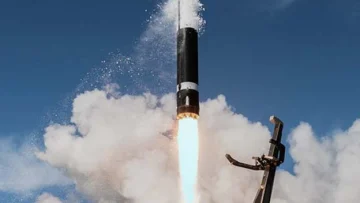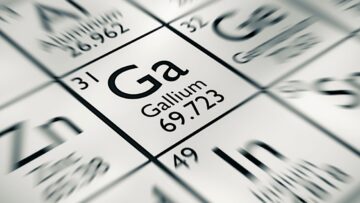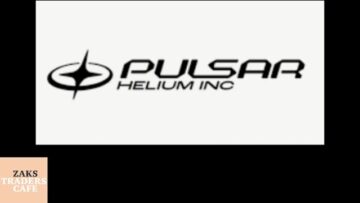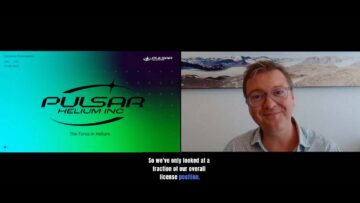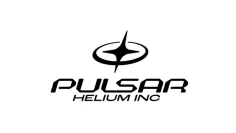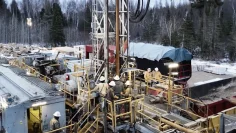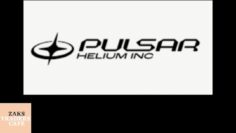Expectations exceeded
The first imaging of the subsurface using advanced passive seismic techniques at Pulsar Helium Inc.’s (TSXV: PLSR; FRA: Y3K) Topaz helium project in Minnesota shows a 600 metre thick horizon with an aerial extent of ~7 square kilometres that is open laterally to the north and west and is interpreted to represent the lithology which hosts the helium-bearing gas reservoir(s). The measurements were achieved using ambient noise tomography (also referred to as passive seismic) and provide a robust explanation for the historic discovery well drilled in 2011, when a strong helium source containing 10.5 per cent helium was unexpectedly encountered at a depth of 542 metres.
The passive seismic data shows a distinct shear wave velocity anomaly (velocity decrease) that begins at the depth where helium-bearing gas was encountered in the 2011 discovery well. Above this is an impermeable surface layer of igneous rock, below which are likely more porous layers that continue down to a depth of 1,150 metres. Pulsar’s geologists have access to the drill cores from the historic discovery borehole. Re-examination of the drill core has confirmed that the units above the gas discovery consist of igneous rock, which is impermeable and provides an excellent gas seal.
The historic 2011 helium discovery was not pursued at the time because the Federal Bureau of Land Management (BLM) had long supplied the U.S. market with cheap helium from existing reserves https://www.blm.gov/programs/energy-and-minerals/helium. These reserves are now running out with the remaining balance and infrastructure to be privatized in Q1 2024, which is why the USA is heading for a growing structural helium deficit. The increasing shortage has led to a sharp rise in helium prices on the market. Current short-term contract and spot prices range between US$ 650 and US$ 3,000/Mcf for 99.999% and liquid He. Longer-term helium average import price for YTD to May ’23 is US$ 481/Mcf. Helium is therefore many times more expensive than natural gas, which is currently trading at US$ 2.78/MM Btu, equivalent to around US$ 2.87/Mcf.
Pulsar Helium used the innovative technology of the Grenoble-based company Sisprobe http://www.sisprobe.com/ for its investigations. Ambient noise tomography (ANT), also known as passive seismology, is a cost-effective and non-invasive geophysical method that uses seismic background noise generated by human activity or natural sources to create 3D maps of underground structures. By analysing the variations in the propagation of ambient noise, geoscientists can measure details about the velocity and properties of geological bodies. The measured velocity anomaly is thought to represent the reservoir harbouring helium-bearing gas. The fresh data will now be fully interpreted in conjunction with the gravity gradient and magnetic data already in Pulsar’s possession.
Pulsar’s President and CEO, Thomas Abraham-James, commented: “The results of the passive seismic survey exceed our expectations. The fact that there is a clear velocity difference at the depth where the discovery well encountered gas with a helium content of 10.5% is simply ideal. The 600 metre thickness of the interpreted reservoir and its openness in two directions also gives us encouragement, suggesting that we are dealing with a reservoir that has the potential for regional scale. The results of this survey will better constrain the resource calculation post exploration drilling and guide future exploration and development drilling.”
Pulsar plans to drill its appraisal well in February 2024, with the new well to be drilled approximately 20 metres from the original discovery well. However, the well is to penetrate deeper than the discovery depth of 542 metres in order to penetrate the gas zone again and determine whether there are any other deeper reservoirs. All licences for the exploratory well have been obtained, the contract for the drilling rig has been signed and all work on site has been completed.
Conclusion: The growing helium deficit in the USA has led to massive price increases for helium since 2013 with no signs of stopping. The major customers are tech companies such as Panasonic, SpaceX, and General Electric, as well as the US Department of Defence. The fact that oil and gas companies have not yet become involved in exploring for helium deposits (unlike lithium) despite their obvious capabilities is probably due to the fact that most helium is extracted as a by-product of gas production. There are only a handful of helium explorers looking for primary helium sources, including Australian companies Noble Helium (ASX: NHE) in Tanzania or Blue Star Helium (ASX: BNL) in the US and now Pulsar Helium (TSXV: PLSR). The prerequisite for these deposits is that they have significantly higher average helium contents than conventional natural gas/helium projects. In Kuwait, which is a leader in LNG production, the natural gas provides average helium contents of only 0.0133%. The 10.5% historically measured helium content of Pulsar's Topaz project is in a completely different league. They would also trump the contents of Blue Star Helium, which has a helium content of 8.5%, making it the leader to date. Pulsar Helium's unique opportunity is to confirm a helium discovery in the USA as early as next February, which could open up a completely new, potentially huge helium field. Such a discovery would be disruptive and could be of strategic importance for the USA. Pulsar could thus become the helium company in the USA and, if successful, aim to take over the role previously held by the BLM. So there is a lot at stake. We will therefore be following Pulsar closely from now on.
Disclaimer: GOLDINVEST Consulting GmbH offers editors, agencies and companies the possibility to publish comments, analyses and news on http://www.goldinvest.de. These contents serve exclusively the information of the readers and do not represent any kind of call to action, neither explicitly nor implicitly they are to be understood as an assurance of possible price developments. Furthermore, they do not in any way replace individual expert investment advice and do not constitute an offer to sell the stock(s) discussed or a solicitation to buy or sell securities. This is expressly not a financial analysis, but an advertising / journalistic text. Readers who make investment decisions or carry out transactions on the basis of the information provided here do so entirely at their own risk. There is no contractual relationship between the GOLDINVEST Consulting GmbH and its readers or the users of its offers, because our information refers only to the company, but not to the investment decision of the reader.
The acquisition of securities involves high risks, which can lead to a total loss of the invested capital. The information published by GOLDINVEST Consulting GmbH and its authors is based on careful research. Nevertheless, any liability for financial losses or the content guarantee for topicality, correctness, adequacy and completeness of the articles offered here is expressly excluded. Please also note our terms of use.
According to §34b WpHG and § 48f Abs. 5 BörseG (Austria) we would like to point out that GOLDINVEST Consulting GmbH and/or partners, principals or employees of GOLDINVEST Consulting GmbH hold shares of Pulsar Helium and therefore a conflict of interest exists. GOLDINVEST Consulting GmbH also reserves the right to buy or sell shares of Pulsar Helium at any time, which could influence the price of the shares. In addition, a consulting or other service contract exists between Pulsar Helium and GOLDINVEST Consulting GmbH, with which a further conflict of interest exists, since Pulsar Helium remunerates GOLDINVEST Consulting GmbH for reporting.



